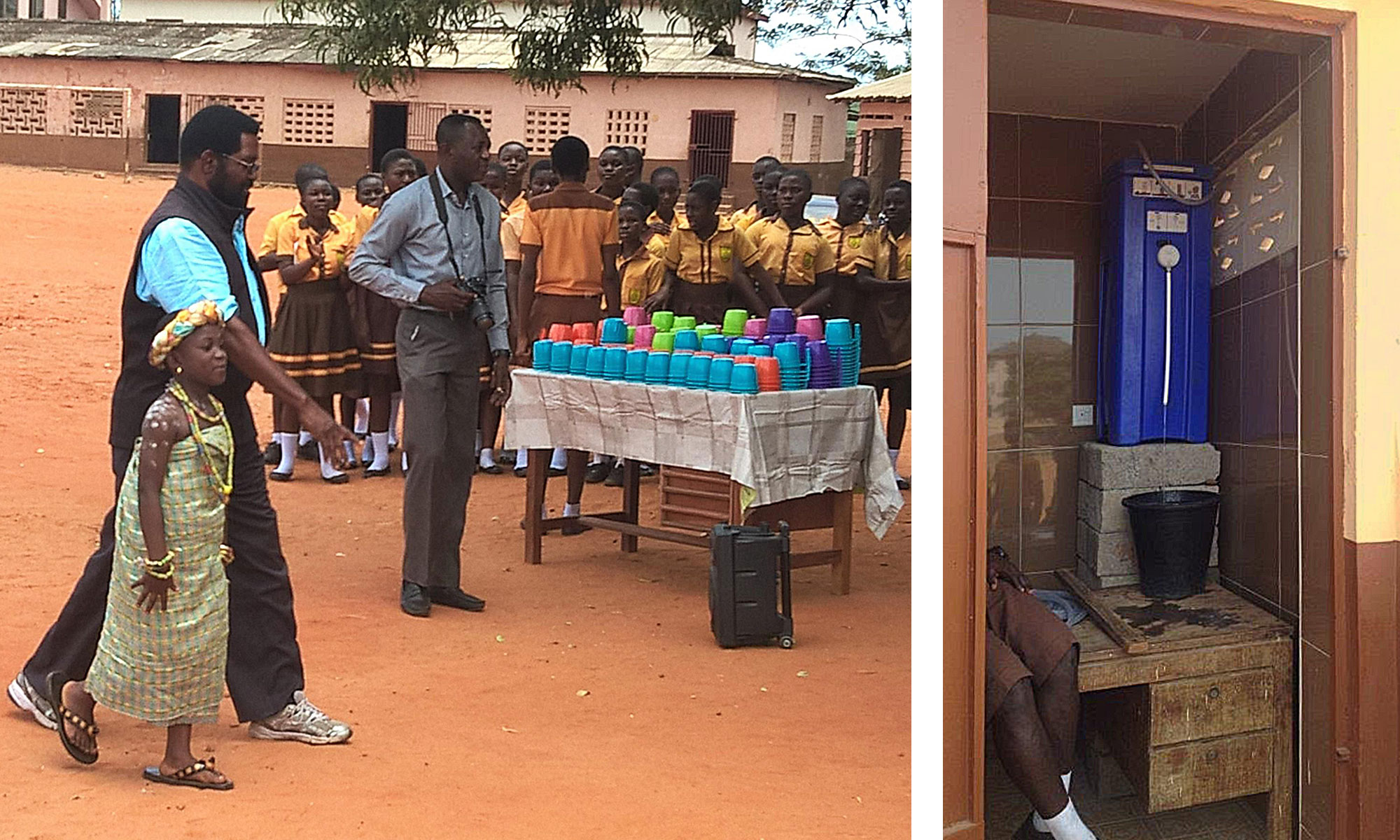Drinking Water for West Africa
- There is enough water in Africa.
- But it is contaminated.
- It makes people ill.
- Every person needs 5 liters of water a day.
- In order to live.
- In order to survive.
Mission
Problem
Access to safe and healthy water is a basic human right, but
- Almost 1 person in 10 has no access to clean water. *
- For over a third of the world population there is no sanitation infrastructure.
- According to the WHO every individual needs 5 liters of clean water per day for drinking, cooking and minimal hygiene.
- In order to live. In order to survive.
- In vielen Dörfern und Städten bezieht die Bevölkerung ihr Wasser direkt aus Seen, Flüssen oder einfachen Bohrlöchern. Dieses wird in unsauberen Behältnissen entweder direkt von der Bezugsquelle nach Hause getragen oder mit Lastwagen verteilt.
- Fehlende Finanzierung für Transport- und Verteilkosten, Unruhen, Naturkatastrophen und schlechte Strassen führen vielerorts zu einem Dauermangel an Trinkwasser.
*WHO/UNICEF Joint Monitoring Program Report 2012
Consequence
Poor water quality and a lack of sanitation facilities cause illness, disability and
death.
- 1.6 million people die every year as a result of diarrhoea-related illnesses (including cholera), 90% are children under the age of 5. Therefore, contaminated water is one of the main causes of death in children. *
- 160 million get infected with schistosomiasis (bilharzia), which is often fatal ; 500 million suffer from trachoma, an eye inflammation caused by the bacteria chlamydia trachomatis and which can eventually lead to blindness. Widespread gasto-intestinal helminths (worms) and hepatitis are further consequences of contaminated water. *
*WHO/UNICEF Joint Monitoring Program Report 2012
Solution
Immediate Solution: Water Filter
Eugen Müller started looking for simple drinking water systems which are easy to implement and maintain locally. He struck lucky at the University of Kassel with the system Portable Aqua Unit for Lifesaving (PAUL)**). In case of disasters/catastrophes in Germany, portable water filter tanks were developed which withhold 99% of harmful bacteria and viruses, as well as rough or coarse particles from contaminated water, thereby producing clean water.
- Filters off dirt and 99.99% of bacteria and viruses
- Runs without additional energy, chemicals, additives or operator/personnel
- Provides over 1,500 liters of clean water daily
Field Test
In the field test Müller, in collaboration with the town council, set up the first water filter in Assin-Fosso in Ghana. Originally developed as a backback tank in case of earthquake or similar for short-term, flexible operation, it needed certain modifications for stationary and continuous use. Müller connected the water filter to 2 water tanks, one on a raised stone base in which the contaminated water collects and a second sterile one in which the cleansed water drains and can then be drawn off. For the last year and a half *the water filter has supplied approximately 1,500 liters per day without any complications, fulfilling the daily water requirements of 300 people, undergoing maintenance once a month and, during Müllers first yearly inspection, showed neither signs of defects nor wear and tear.
*Status July 2015
Assin-Fosso
Water filter :
1 PAUL
Daily amount of water :
1,500 liters
Implemented :
March 2014
Water source :
Ground water boreholes
Special features :
Small town in central region, Ghana, 1 PAUL for water supply for approximately 300 inhabitants
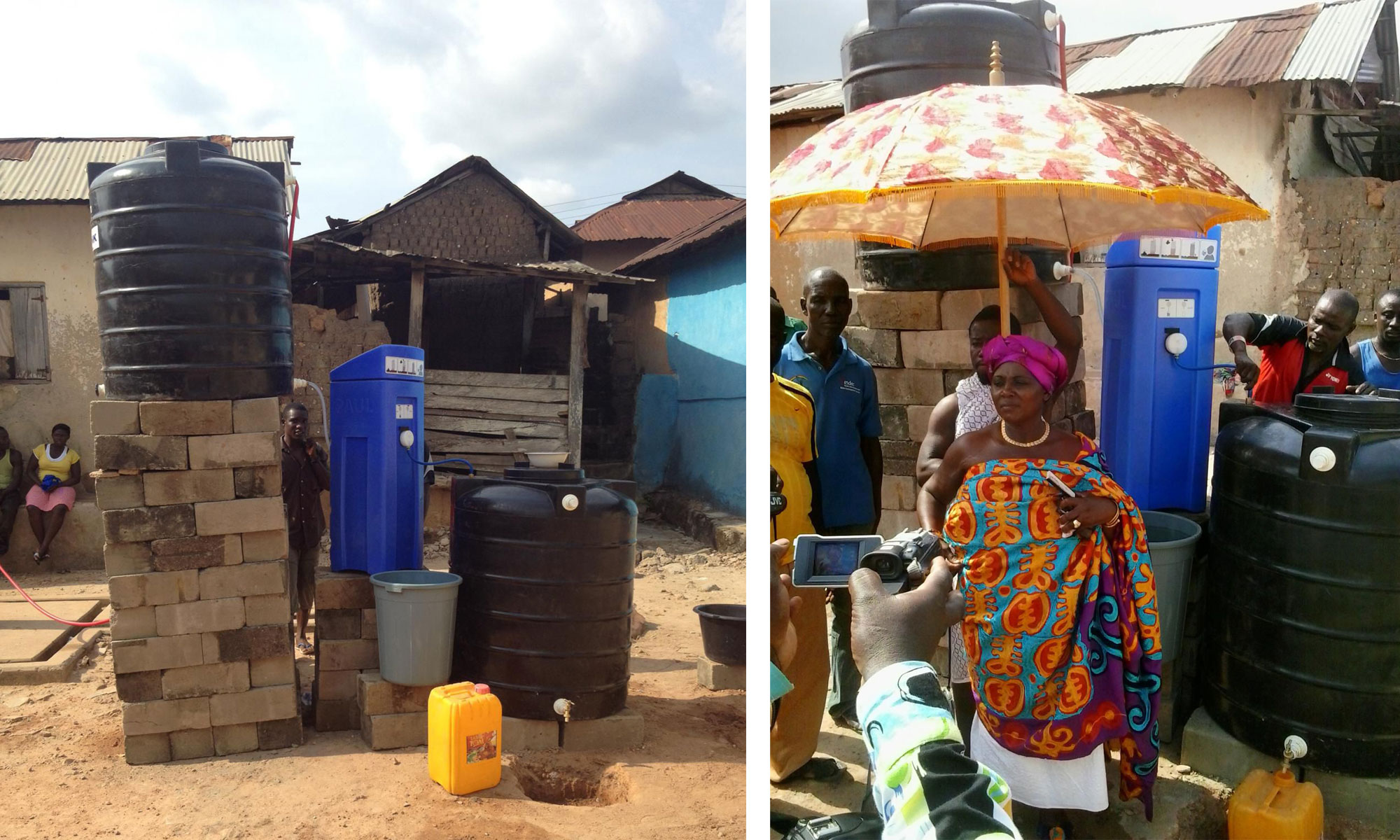
Kulaa bei Tamale
Water filter :
1 PAUL
Daily amount of water :
1,500 liters
Implemented :
April 2015
Water source :
Artificial lake
Special features :
Village near Tamale, northern region, Ghana. Lake is water source for cattle and people.
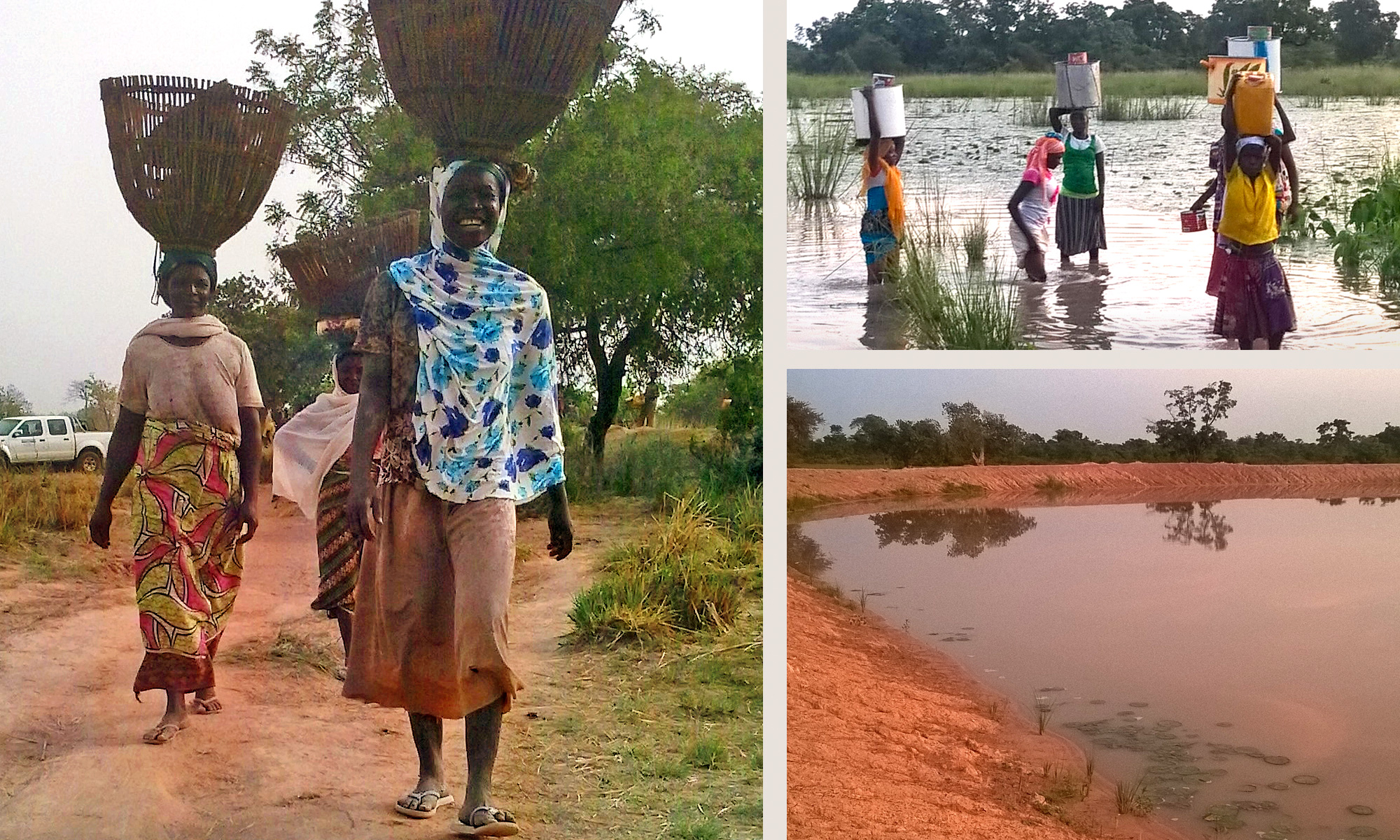
Kuntaliga / Suashe
Water filter :
1 PAUL
Daily amount of water :
1,500 liters
Implemented :
April 2015
Water source :
Artificial lake
Special features :
Village between Tamale and Tamale Airport, 300 meters away from the tarred road, northern region, Ghana. Lake is water source for cattle and people.
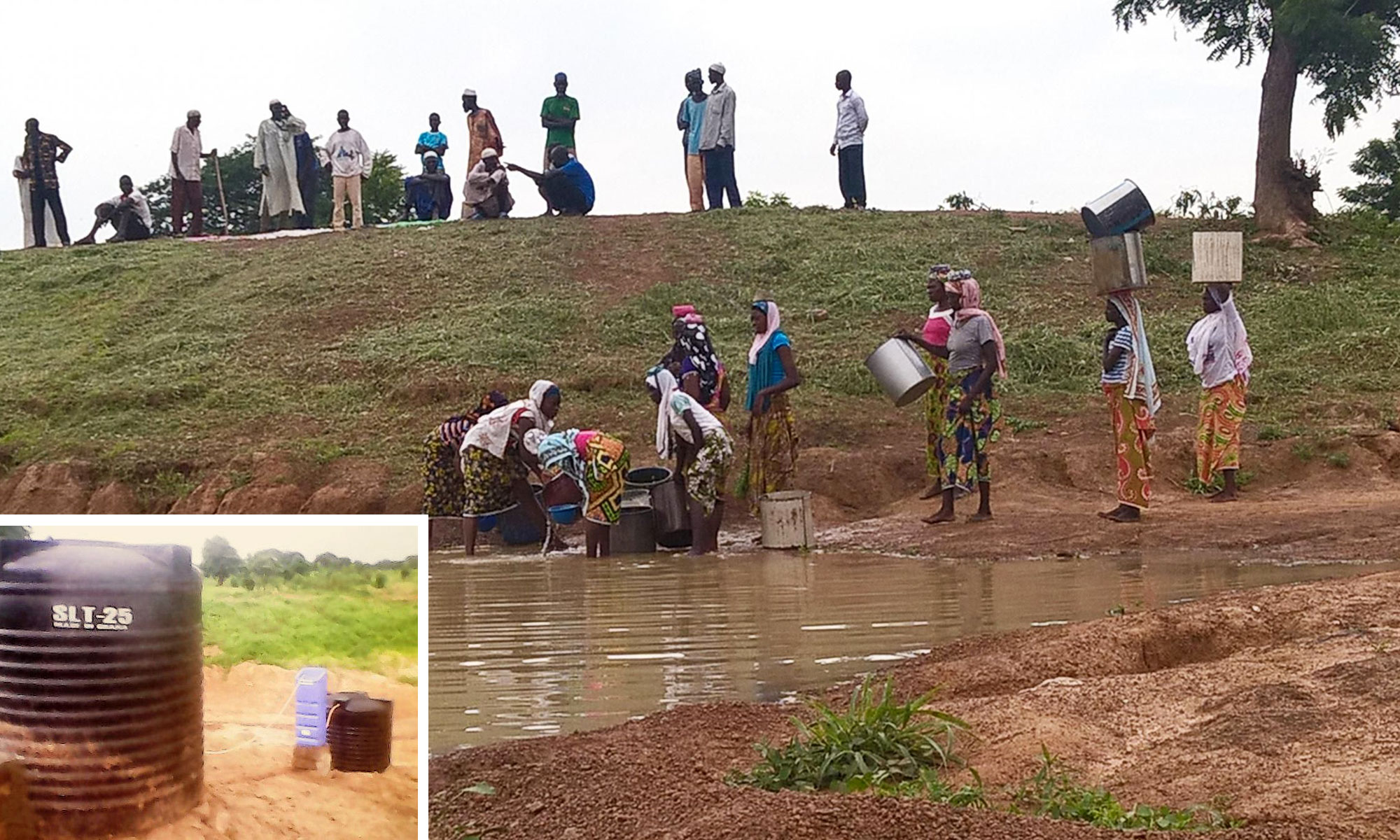
Kanneshie Clusterschool Accra
Water filter:
1 PAUL
Daily amount of water:
1,500 liters
Implemented :
April 2015
Water source :
Ground water boreholes
Special features :
In the capital of Ghana a water dispenser was implemented and supplies water to 900 pupils every day.
